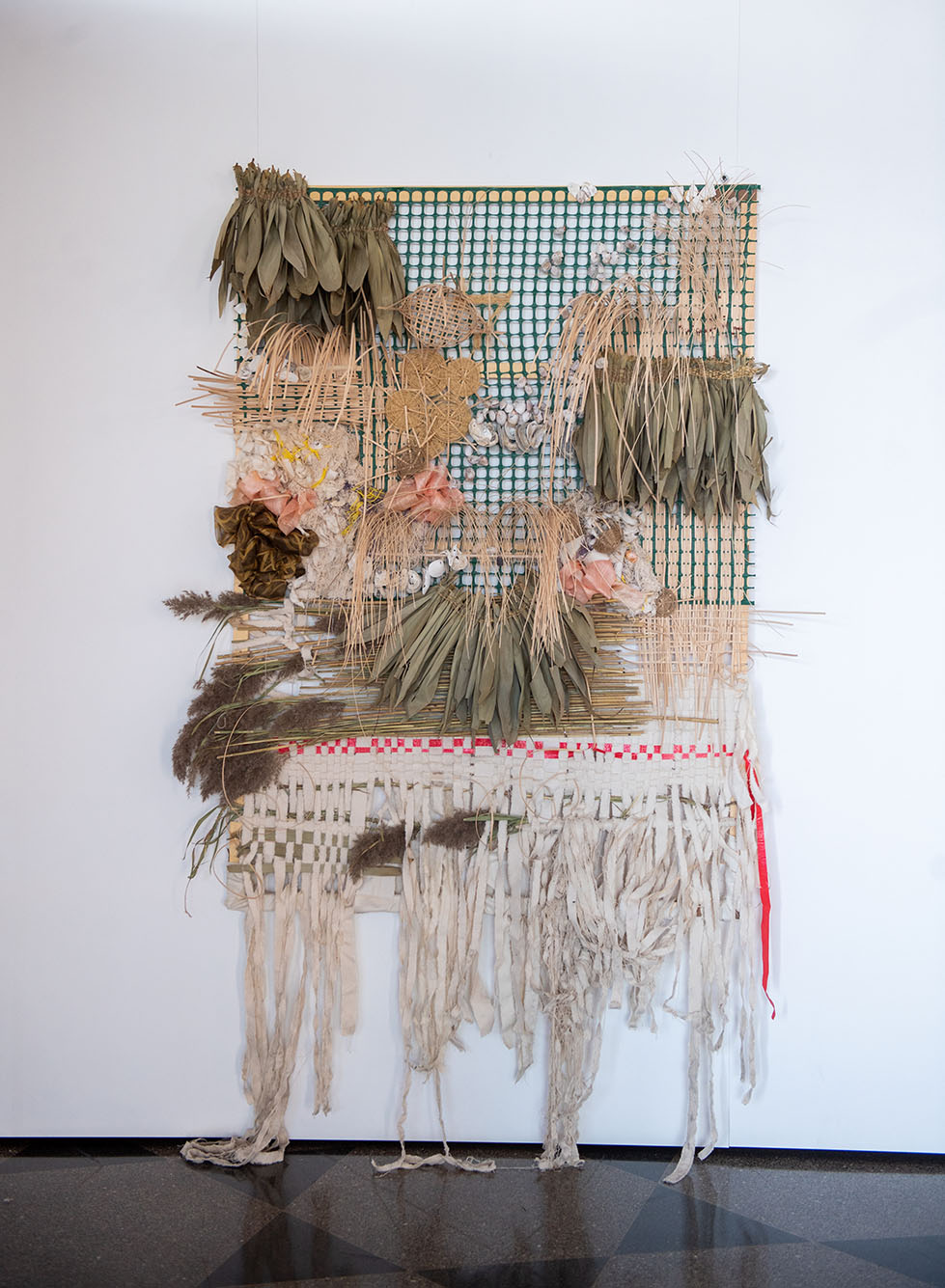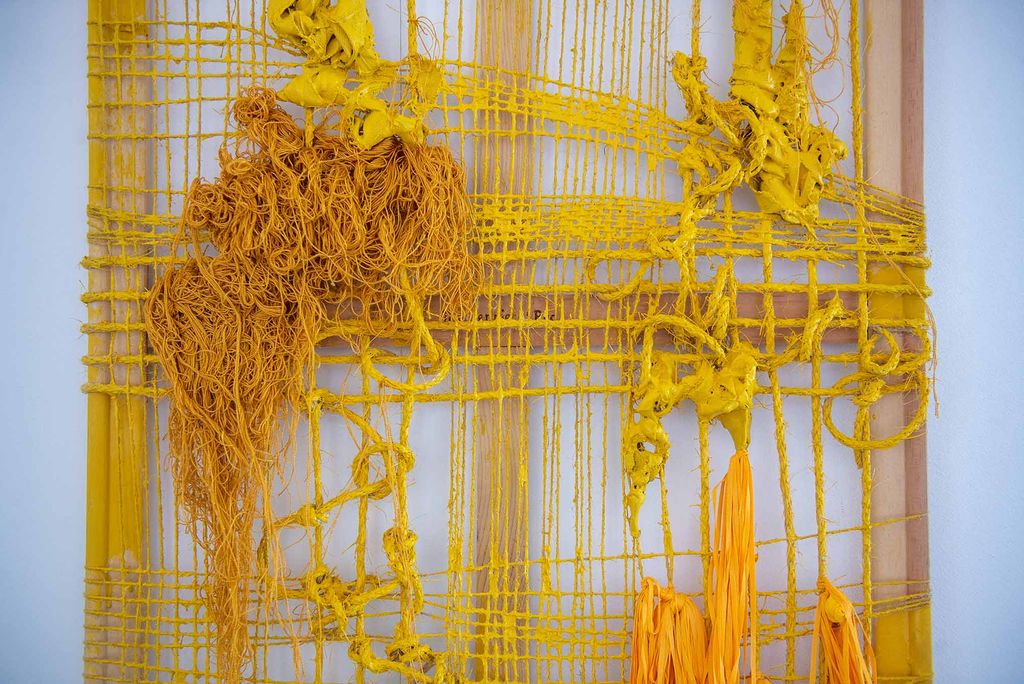A Narrative about the Filipino Immigrant Experience at the 808 Gallery

A Narrative about the Filipino Immigrant Experience at the 808 Gallery
In Hidden and Hiding (Tago ng Tago), artist Bhen Alan reimagines a traditional weaving practice using unconventional materials
This article was first published in BU Today on November 21, 2022. By Sophie Yarin | Photos by Cydney Scott
Excerpt
Bhen Alan has many identities: artist, scholar, queer man, Filipino immigrant. His textile works, which draw on the traditional weaving practices of his homeland, thread each of these various identities together and allow them to amplify and complement one another. They are his badges of honor, sources of endless inspiration. But Alan says that when he first left the Philippines for North America as a teenager, he wanted to leave who he was behind.
“When I moved to Canada, I didn’t eat Filipino food for a very long time, I didn’t speak the language, and I literally forgot Filipino gestures and movements,” he says. “I just wanted to fit in.”
Alan’s conundrum was not unique. Immigrants across the globe feel pressure to assimilate, but there is a particular Filipino phenomenon of self-erasure, he says, referred to in Tagalog as tago ng tago (TNT), representing the physical, psychological, and spiritual evasions that undocumented overseas Filipino workers (OFWs) must live with to survive. In his new show, Hidden and Hiding (Tago ng Tago), on view at the 808 Gallery through December 3, the artist explores that theme as it relates to him and the Filipino diaspora as a whole.
“Tago ng tago means ‘always hiding’—it [refers] to Filipino immigrants working abroad who chose to stay to make more money to support their families in spite of not being authorized,” Alan says. “It’s about hiding your identity from adversity, but also cementing yourself in a space that you cannot be removed from, in order for you to support your family and yourself.”

He began to connect with the traditions he engaged in as a child, like Filipino dance, weaving, and costume-making. “I was trained to dance traditional folk dances, and at the time I thought it was just a mundane thing that everyone does to keep the tradition going,” he says. “I was really interested in ornamentation and decoration—like making curtains and weaving bamboo baskets for our chickens—but I really didn’t know that those things were art.”
Today, he uses his woven art to affirm an identity he spent much of his life subjugating. “I make my work, my materials, really extravagant and flamboyant, because queer culture in the Philippines is about being big and loud and flamboyant,” he says.
Much of his inspiration comes from the women in his life, as weaving is traditionally a female practice in the Philippines. The Hidden and Hiding exhibition, he notes, owes a great deal to his mother, Mhimie O’Rourke.